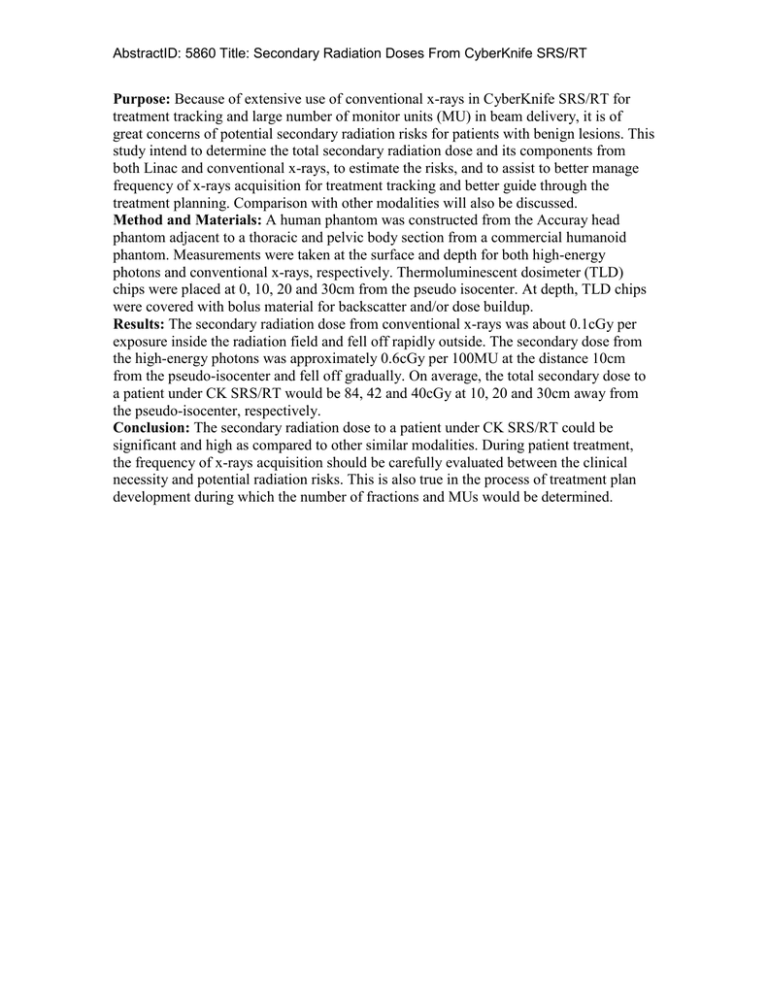Purpose: treatment tracking and large number of monitor units (MU) in... great concerns of potential secondary radiation risks for patients with...
advertisement

AbstractID: 5860 Title: Secondary Radiation Doses From CyberKnife SRS/RT Purpose: Because of extensive use of conventional x-rays in CyberKnife SRS/RT for treatment tracking and large number of monitor units (MU) in beam delivery, it is of great concerns of potential secondary radiation risks for patients with benign lesions. This study intend to determine the total secondary radiation dose and its components from both Linac and conventional x-rays, to estimate the risks, and to assist to better manage frequency of x-rays acquisition for treatment tracking and better guide through the treatment planning. Comparison with other modalities will also be discussed. Method and Materials: A human phantom was constructed from the Accuray head phantom adjacent to a thoracic and pelvic body section from a commercial humanoid phantom. Measurements were taken at the surface and depth for both high-energy photons and conventional x-rays, respectively. Thermoluminescent dosimeter (TLD) chips were placed at 0, 10, 20 and 30cm from the pseudo isocenter. At depth, TLD chips were covered with bolus material for backscatter and/or dose buildup. Results: The secondary radiation dose from conventional x-rays was about 0.1cGy per exposure inside the radiation field and fell off rapidly outside. The secondary dose from the high-energy photons was approximately 0.6cGy per 100MU at the distance 10cm from the pseudo-isocenter and fell off gradually. On average, the total secondary dose to a patient under CK SRS/RT would be 84, 42 and 40cGy at 10, 20 and 30cm away from the pseudo-isocenter, respectively. Conclusion: The secondary radiation dose to a patient under CK SRS/RT could be significant and high as compared to other similar modalities. During patient treatment, the frequency of x-rays acquisition should be carefully evaluated between the clinical necessity and potential radiation risks. This is also true in the process of treatment plan development during which the number of fractions and MUs would be determined.




